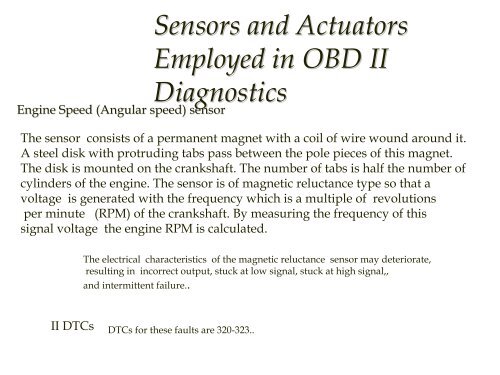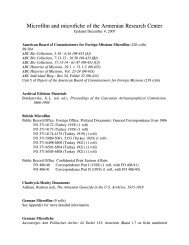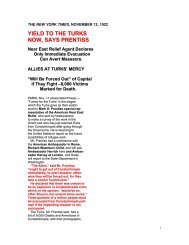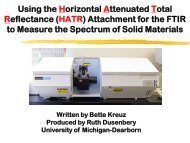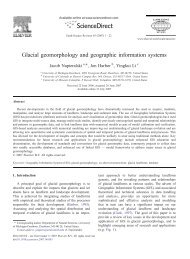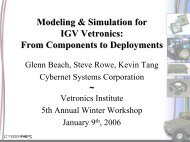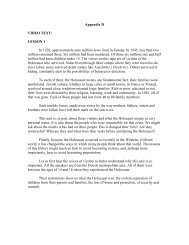Introduction to On Board Diagnostics (II)
Introduction to On Board Diagnostics (II)
Introduction to On Board Diagnostics (II)
You also want an ePaper? Increase the reach of your titles
YUMPU automatically turns print PDFs into web optimized ePapers that Google loves.
Sensors and Actua<strong>to</strong>rsEmployed in OBD <strong>II</strong><strong>Diagnostics</strong>Engine Speed (Angular speed) sensorPrinciple of operationThe sensor consists of a permanent magnet with a coil of wire wound around it.A steel disk with protruding tabs pass between the pole pieces of this magnet.The disk is mounted on the crankshaft. The number of tabs is half the number ofcylinders of the engine. The sensor is of magnetic reluctance type so that avoltage is generated with the frequency which is a multiple of revolutionsper minute (RPM) of the crankshaft. By measuring the frequency of thissignal voltage the engine RPM is calculated.<strong>Diagnostics</strong>The electrical characteristics of the magnetic reluctance sensor may deteriorate,resulting in incorrect output, stuck at low signal, stuck at high signal,,and intermittent failure..OBD <strong>II</strong> DTCsThe failure modes of Engine speed sensor are diagnosed by OBD <strong>II</strong>.DTCs for these faults are 320-323..


